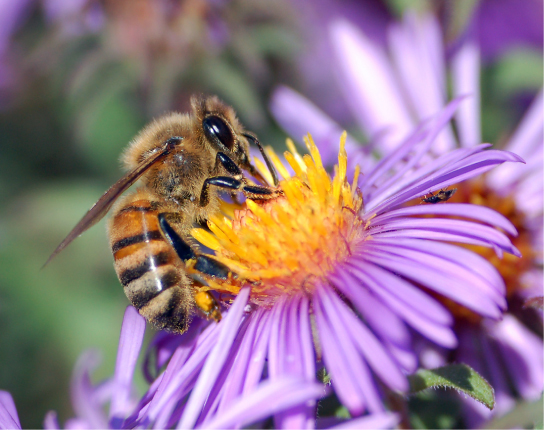| << Chapter < Page | Chapter >> Page > |

Background: Visitation of flowers by pollinating flies is a function mostly of smell. Flies are attracted by rotting flesh and carrions. The putrid odor seems to be the major attractant. The polyamines putrescine and cadaverine, which are the products of protein breakdown after animal death, are the source of the pungent smell of decaying meat. Some plants strategically attract flies by synthesizing polyamines similar to those generated by decaying flesh and thereby attract carrion flies.
Flies seek out dead animals because they normally lay their eggs on them and their maggots feed on the decaying flesh. Interestingly, time of death can be determined by a forensic entomologist based on the stages and type of maggots recovered from cadavers.
Hypothesis: Because flies are drawn to other organisms based on smell and not sight, a flower that is normally attractive to bees because of its colors will attract flies if it is sprayed with polyamines similar to those generated by decaying flesh.
Test the hypothesis:
| Results of Number of Visits by Flies to Sprayed and Control/Unsprayed Flowers | ||
|---|---|---|
| Trial # | Sprayed Flowers | Unsprayed Flowers |
| 1 | ||
| 2 | ||
| 3 | ||
| 4 | ||
| 5 |
Analyze your data: Review the data you have recorded. Average the number of visits that flies made to sprayed flowers over the course of the five trials (on the first flower type) and compare and contrast them to the average number of visits that flies made to the unsprayed/control flowers. Can you draw any conclusions regarding the attraction of the flies to the sprayed flowers?
For the second flower type used, average the number of visits that flies made to sprayed flowers over the course of the five trials and compare and contrast them to the average number of visits that flies made to the unsprayed/control flowers. Can you draw any conclusions regarding the attraction of the flies to the sprayed flowers?
Compare and contrast the average number of visits that flies made to the two flower types. Can you draw any conclusions about whether the appearance of the flower had any impact on the attraction of flies? Did smell override any appearance differences, or were the flies attracted to one flower type more than another?
Form a conclusion: Do the results support the hypothesis? If not, how can this be explained?

Notification Switch
Would you like to follow the 'Biology' conversation and receive update notifications?